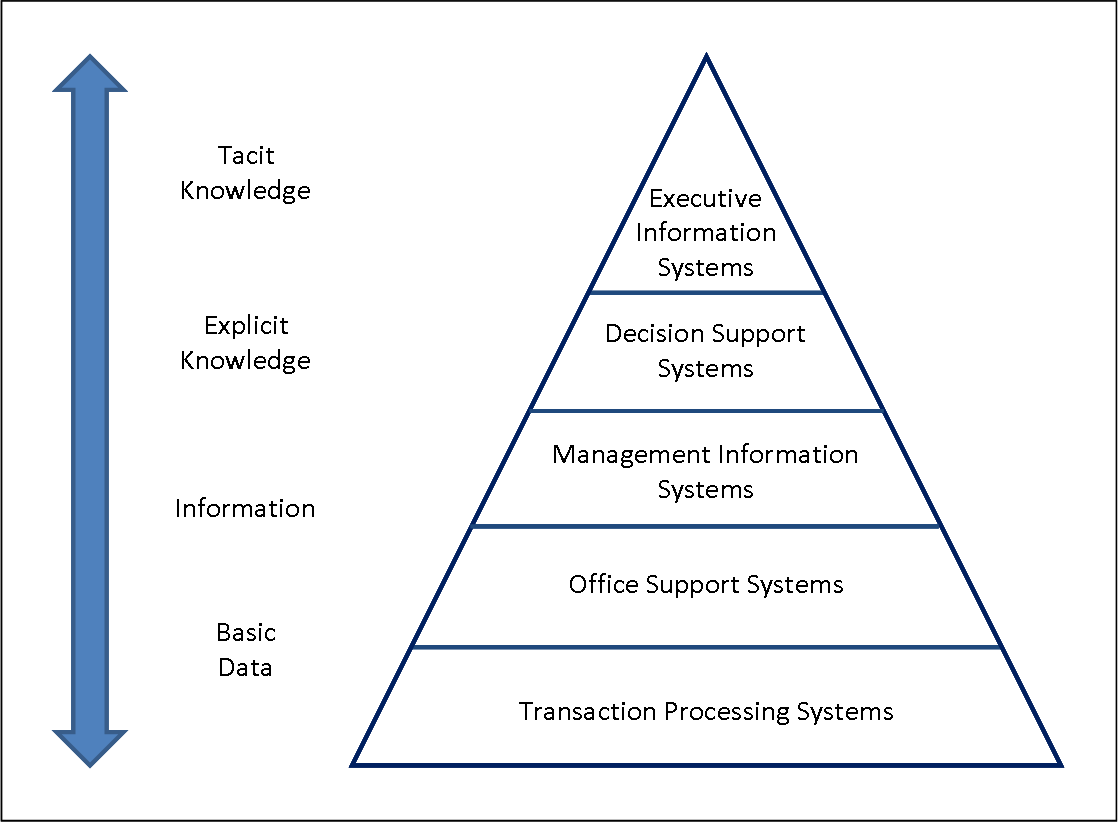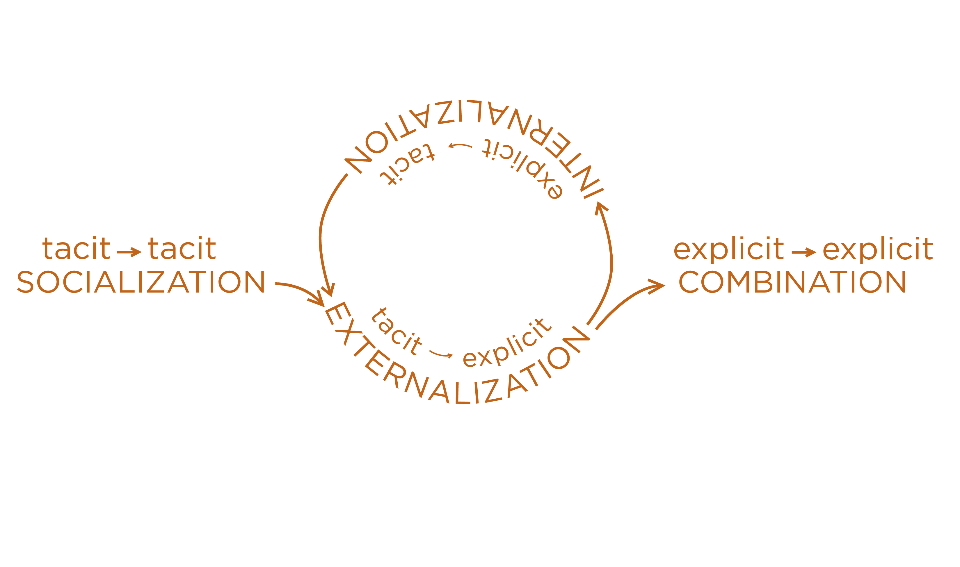Difference Between Tacit Knowledge and Explicit Knowledge
The field of Knowledge Management (KM) is recognized as critical for the achievement of business model design, performance, and evolution. In this regard, most of the world’s researches are oriented toward this field. Despite its importance to improve the competitiveness, innovation, and decision making for the internal management of the company, a little is known on the field. Before you go any further, let’s first understand the two most common and less-understood types of knowledge: Tacit Knowledge and Explicit Knowledge.

What is Tacit Knowledge?
The terminology is applied widely, but the exact concept of tacit knowledge is rarely explained. Tacit knowledge is knowledge that is not explicated, and is highly personal and hard to formalize. It is knowledge that is difficult to write down, visualize, share or articulate because it’s all inside people’s heads. It is often informal and is garnered from personal experiences. Subjective insights, hunches, and intuitions fall into the category of tacit knowledge. It’s difficult to verbalize and is deeply rooted in an individual’s action and experience, as well as in the values or emotions he/she embraces.
The term tacit knowledge was coined by Michael Polanyi, a physical chemist and one of the 20th century’s most novel philosophers of sciences, in his literary work “Personal Knowledge” in 1958. He believed that people know more than they can tell. So, simply put, tacit knowledge is knowledge that is active in the mind but not consciously accessed at the moment of knowing. It is something that can only be learned through experiences; it is something an individual possesses but finds it difficult to express in words. For example, your knowledge of the ability to ride a bike is tacit.

What is an Explicit Knowledge?
Explicit knowledge, also known as expressive knowledge, is the most basic form of knowledge that can be expressed in words and numbers, and shared in the form of data. It can be readily articulated and accessed, and can be transmitted across individuals formally and systematically. Explicit knowledge is clearly communicated by spoken or written languages. Explicit knowledge is conscious and declarative and is generally accessible only through controlled processing. This means explicit knowledge exists as declarative facts that can only be accessed through the application of attention processes.
It is not readily available in spontaneous language use where there is little opportunity for careful planning. Explicit knowledge is all things that are a part of a knowledge management strategy. This type of knowledge exists in material forms such as books, instruction manuals, FAQs, reports, databases, how-to videos, and so on. It can be anything that is easy to write down and pass along, like documented information which facilitates action.
Difference between Tacit Knowledge and Explicit Knowledge
Meaning
– Tacit knowledge is something you know but rather struggle to put it into words. It is based on your personal experiences, memories, and convictions. It is close to practical skills and it is very difficult to convey this knowledge verbally. On the contrary, explicit knowledge is expressive knowledge that can be readily articulated and accessed, and can be transmitted across individuals formally and systematically.
Awareness
– Tacit knowledge is intuitive as it’s embedded in your mind and you may intuitively understand the situations and circumstances, but you do not understand the logic behind it. But, it is difficult to express your intuitions into words. Explicit knowledge, however, is conscious meaning you can make this knowledge accessible in the form of data, specifications, manuals, and so on.
Accessibility
– Implicit or tacit knowledge is the intelligence gained through personal experiences and can be difficult to share with others. It cannot be described as it exists in the form of statistically weighted connections between memory nodes. It is active in the mind but not consciously accessed at the moment of knowing. Explicit knowledge, however, exists as declarative facts that can be identified, accessed, and shared in the form of data.
Example
– Learning a new language, riding a car, playing a guitar, hitting a nail with a hammer, learning a new sport, developing a new talent, and your intuition are some of the basic examples of tacit knowledge. On the contrary, explicit knowledge is something that is already codified or documented, like the information contained in textbooks and encyclopedias, instruction manuals, how-to guides and videos, databases, and so on.
Tacit Knowledge vs. Explicit Knowledge

Summary
It is true that all explicit knowledge rest of tacit knowledge, we would have no concept of the tacit without the explicit. The idea of tacit knowledge itself depends on explicit knowledge. While tacit knowledge can be possessed by itself, explicit knowledge must rely on being tacitly understood. So, we can say that all knowledge is either tacit or rooted in tacit knowledge. Understanding the reciprocal relationship between tacit knowledge and explicit knowledge is the key to understanding the knowledge-creating process.
What are examples of tacit knowledge?
Learning to walk, run, swim, or ride a bike are all examples of tacit knowledge. This is something you do not get from being taught or by reading books; it’s something you learn from your experiences.
Why is tacit and explicit knowledge important?
Tacit knowledge is important because it is an important driver in the innovation process and a source of competitive advantage as well as critical to knowledge management. Organizations use tacit knowledge to augment an individual’s academic learning and experience.
What are the 4 types of knowledge?
Knowledge can be categorized into: procedural, factual, conceptual, and metacognitive knowledge.
What are 3 major types of knowledge?
The three major types of knowledge are explicit knowledge (expressive knowledge), tacit knowledge (intuitive information), and implicit knowledge (applied information).
- Difference Between Caucus and Primary - June 18, 2024
- Difference Between PPO and POS - May 30, 2024
- Difference Between RFID and NFC - May 28, 2024
Search DifferenceBetween.net :
Leave a Response
References :
[0]Baumard, Philippe. Tacit Knowledge in Organizations. California, United States: SAGE Publications, 1999. Print
[1]Jaziri-Bouagina, Dhouha, et al. Handbook of Research on Tacit Knowledge Management for Organizational Success. Pennsylvania, United States: IGI Global, 2017. Print
[2]Nonaka, Ikujiro and Toshihiro Nishiguchi. Knowledge Emergence: Social, Technical, and Evolutionary Dimensions of Knowledge Creation. Oxford, United Kingdom: Oxford University Press, 2001. Print
[3]Collins, Harry. Tacit and Explicit Knowledge. Chicago, United States: University of Chicago Press, 2010. Print
[4]Ellis, Rod, et al. Implicit and Explicit Knowledge in Second Language Learning, Testing and Teaching. Bristol, United Kingdom: Multilingual Matters, 2009. Print
[5]Image credit: https://commons.wikimedia.org/wiki/File:Wheel_of_Knowledge.png
[6]Image credit: https://commons.wikimedia.org/wiki/File:Five-Level-Pyramid-model.png
